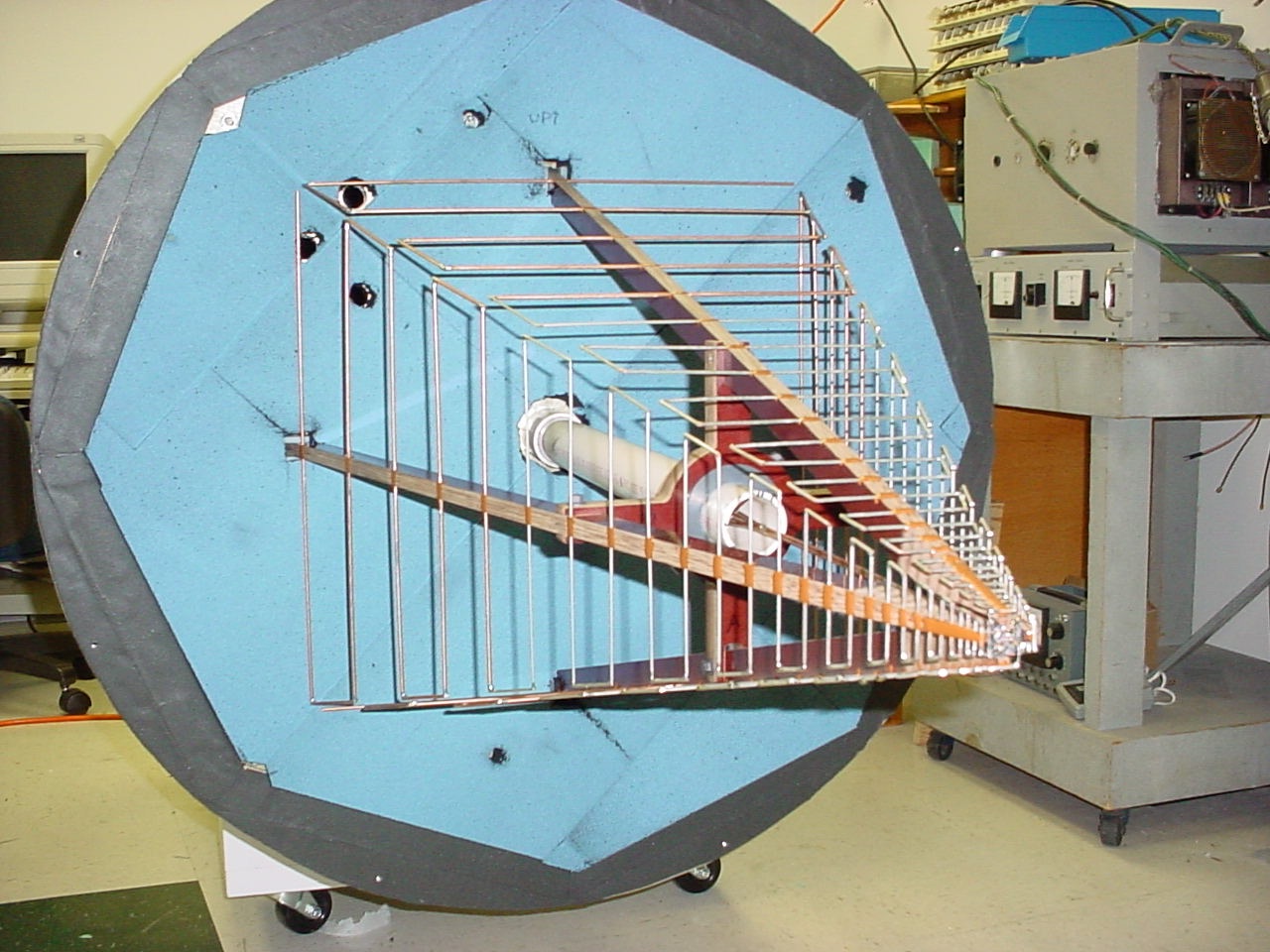|
The GBSRBS makes use of two dual-polarization, broadband, trapezoidal
log-periodic antennas
for the majority of its frequency coverage, which extends from 10 MHz
to 3 GHz (0.1 meter to
30 meters). One or more crossed dipoles will cover the lowest band,
from 10 MHz to 30MHz.
The intermediate-frequency log periodic antenna is designed for the 30
MHz to 350 MHz band
and will sit atop the prime focus of the 13.7-meter dish, pointing
skyward. A scaled-down
version of this antenna will act as a feed for the 13.7 m, covering
300 MHz to 3 GHz. The
13.7 m (45 ft) telescope was refurbished in 1992 in preparation for a
return to operation
as a NASA ground station for Orbiting VLBI.
Phase I of the project involves an Erickson dipole, donated by the
Naval Research
Laboratory, collecting single polarization data which is buffered by
an NRL active balun
preamplifier and then transported via coaxial cable to an HP 8553B
spectrum analyzer.
The spectrum analyzer sweeps the 18 - 70 MHz band once per second,
linearly sampling 1670
frequency channels, each with a bandwidth of 30 kHz. The time
resolution of the instrument is 1 second. A Measurement
Computing PCI-DAS1200
Analog-to-Digital converter interfaces with the spectrum analyzer via
an open source Linux
driver (Comedi). In phase II, the spectrum analyzers will be replaced
by several frequency converters, each translating different 20-MHz sections
of the band to an IF to be sampled by a 14-bit Adlink PCI-9820 data acquisition card.
|
|
Click to enlarge

The 350-2500 MHz log periodic trapezoidal antenna, just before deployment to Green Bank. May be seen mounted on the 45-ft inside its green weatherproof shell on the GBSRBS main page
|
